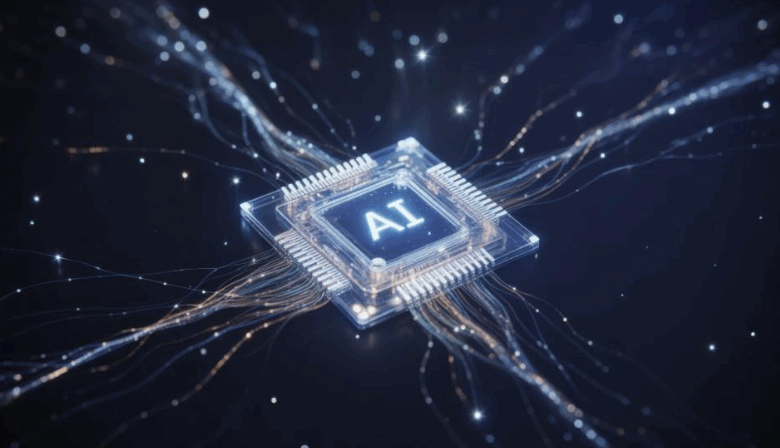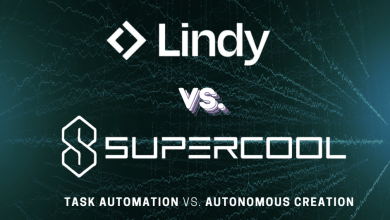
Within the first quarter of 2024, a leading hyperscaler quietly doubled the power budget for its AI cluster to a staggering 300 megawatts, enough to light up a mid-sized city. While shocking for some, industry insiders weren’t surprised. The event underscores a growing challenge in AI infrastructure. Each leap in AI capability comes tethered to an insatiable appetite for compute, data bandwidth, and energy.
Today’s data centers, often the core of AI innovation, are approaching their limits. They’re not just facing burgeoning demands from industries like healthcare, manufacturing, and finance, but also doing so under tightening constraints of limited energy budgets and sustainability goals. The challenge is clear. While AI will undoubtedly shape the future, can traditional infrastructure keep pace?
The Crux of the Problem
The rapid growth of AI workloads has reshaped how we perceive data architectures. Unlike conventional analytics or database tasks, AI models like large language models (LLMs) and inferencing are voracious for memory and input/output (I/O) bandwidth. GPU-driven systems need massive, parallel data processing where even milliseconds of latency become costly bottlenecks.
Legacy architectures were never built for this reality. CPUs, DRAM, and storage largely operate in isolation, moving data inefficiently across the pipeline. Memory limitations force expensive GPUs to sit idle while waiting for essential data. According to recent findings, compute power (measured in floating-point operations per second, or FLOPS) has increased 3.0× every two years. Memory growth, however, languished at only 1.6× in the same time period. That growing chasm, known as the memory wall, places escalating strain on modern AI systems.
The consequence isn’t just slower models; it’s skyrocketing operational costs. DRAM alone can account for over 40% of data center power consumption. Add to this the wider implications of energy inefficiency, and the stakes become clear. The U.S. data center energy demand is forecasted to rise from 147 TWh in 2023 to a staggering 606 TWh by 2030, a load that will surpass all energy consumed for energy-intensive goods like aluminum, steel, and cement combined.
New Architectural Solutions to Unlock AI Potential
The hardware and software ecosystem must innovate beyond legacy constraints to keep powering AI sustainably. Two emerging innovations that address this challenge are Compute Express Link (CXL) and intelligent storage systems featuring in-place data processing.
• CXL Memory to Expand Capability Without Waste: Compute Express Link (CXL) redefines memory for AI systems. It enables DRAM to sit directly on PCIe fabrics, expanding memory resources cost-effectively and at scale. No longer is memory constrained by what capacity can be direcly attached to a CPU. Instead, AI systems can access shared, large memory pools over PCIe for on-demand scalability of capacity and bandwidth.
CXL-attached memory is proving invaluable for AI by offering terabytes of low-latency DRAM while reducing the costs of scaling memory. This innovation minimizes idling GPUs, saving costs while amplifying system performance.
• Intelligent Storage Reduces Latency and Energy Use: AI pipelines require rapid and frequent access to massive datasets. Traditional storage designs, which move data back and forth between the CPU and SSD, can cause latency, higher power consumption, and inefficiency.
Innovative storage platforms are now adopting technologies to better align storage performance with AI workload needs. By automating functions like compression in hardware engines directly within the SSD controller and breaking away from optimizations for 4KB and larger IOs, these systems accelerate data movement across the PCIe bus and improve the effective payload of PCIe transfers. This hardware-level optimization enhances performance, reduces CPU workloads, and lowers energy usage, making it ideal for resource-intensive AI systems.
Future-Proofing Enterprise AI
AI adoption is no longer optional for businesses aiming to innovate and compete. But to sustain growth without debilitating costs, businesses must rethink infrastructure and align their investments to address memory, storage, and power efficiency.
Here are three next steps for enterprise AI architecture that organizations should prioritize today:
- Benchmark Data and Memory Costs, Not Just Compute: Today’s TCO (total cost of ownership) metrics must evolve. Beyond $/teraflop, organizations need to weigh $/terabyte-per-second (TBS) to ensure balanced investments across compute and data flow.
- Adopt PCIe-Based Architectures: Solutions like CXL memory and intelligent PCIe storage can bridge the memory bottleneck while saving CPU costs. Implementing scalability will future-proof infrastructure against evolving AI model demands.
- Embed Efficiency into Design: Double-digit energy reductions in training and inference are achievable by streamlining data movement. These gains don’t just align with sustainability goals but can result in tangible TCO and infrastructure output improvements. Terabytes per second per watt has emerged as a critical metric for large-scale deployments.
What Lies Ahead
The memory and storage bottlenecks constraining today’s AI systems will only intensify as models expand, data scales, and industries demand real-time responsiveness. Mitigating these constraints isn’t simply about deploying more GPUs or faster racks. It requires a fundamental realignment of data infrastructures, embedding innovation at every layer, from memory pools to storage design.
Boards and C-suites need to treat these architectural decisions with the same strategic rigor applied to GPU procurement. Without this focus, AI ambitions could fall flat, leaving half of an organization’s GPU investment idle. By prioritizing CXL-based memory expansion and novel storage features, companies can drive AI adoption at scale while staying ahead of both cost and sustainability metrics.
AI might lead us into the future—but smarter data architectures will ensure that future is viable, scalable, and forward-thinking.



